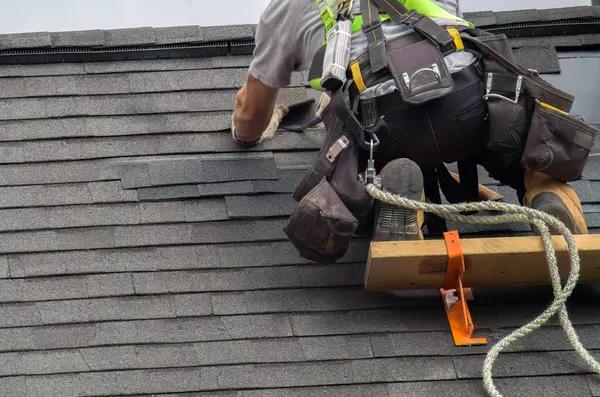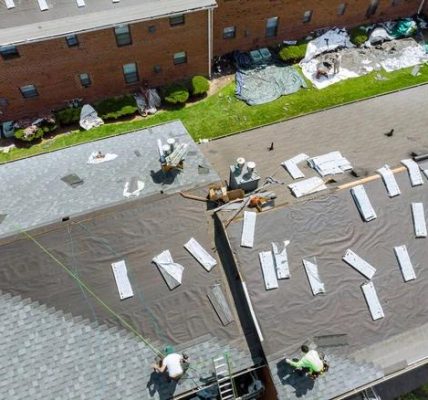Roof replacement for commercial buildings is a major undertaking that requires careful consideration and planning. Unlike residential roofing, which often involves shingles or tiles, commercial roofs are typically flat or low-sloped and require different materials and installation techniques.
One of the key differences in roof replacement for commercial buildings lies in the materials used. Commercial roofs can be made from a variety of materials including modified bitumen, thermoplastic olefin (TPO), polyvinyl chloride (PVC), ethylene propylene diene monomer (EPDM) rubber, and metal. These materials are chosen based on their durability, energy efficiency, cost-effectiveness and ability to withstand extreme weather conditions.
The size of the project also sets commercial roof replacements apart from residential ones. Commercial buildings generally have larger square footages than residential properties. This means more material is needed, making the project more costly and time-consuming. In addition to this, due to their size and complexity, commercial roofs often require specialized equipment for proper installation.
Another significant difference between residential and commercial roof replacements is the level of expertise required by contractors. Installing a new roof on a large-scale building necessitates an experienced team who understands how to handle complex structures while ensuring safety protocols are strictly adhered to during construction.
Additionally, many businesses cannot afford extended periods of downtime during roof replacement company projects as it may disrupt operations leading to financial losses. Therefore timing becomes crucial when replacing a commercial building’s roof; contractors must work efficiently while upholding quality standards so as not to disrupt business operations any longer than necessary.
Furthermore, factors such as drainage systems play a significant role in commercial roofing compared with residential roofing where it’s less complicated due to steep slopes that naturally lead water away from the structure. On flat roofs common with most commercial buildings however, proper drainage systems must be installed during roof replacement to prevent water accumulation which can cause leaks or structural damage over time.
Finally yet importantly is energy efficiency. Many commercial building owners opt for cool roofs during replacement. These are designed to reflect more sunlight and absorb less heat, helping reduce energy costs especially in hot climates.
In conclusion, roof replacement for commercial buildings is a complex process with unique challenges compared to residential roofing. It requires specialized knowledge, materials, and equipment as well as careful planning and execution. Understanding these differences can help business owners make informed decisions when it’s time to replace their building’s roof.
Silver Horn Roofing
3761 Forest Trail Dr, Bandera, Texas 78003
830-293-3122





